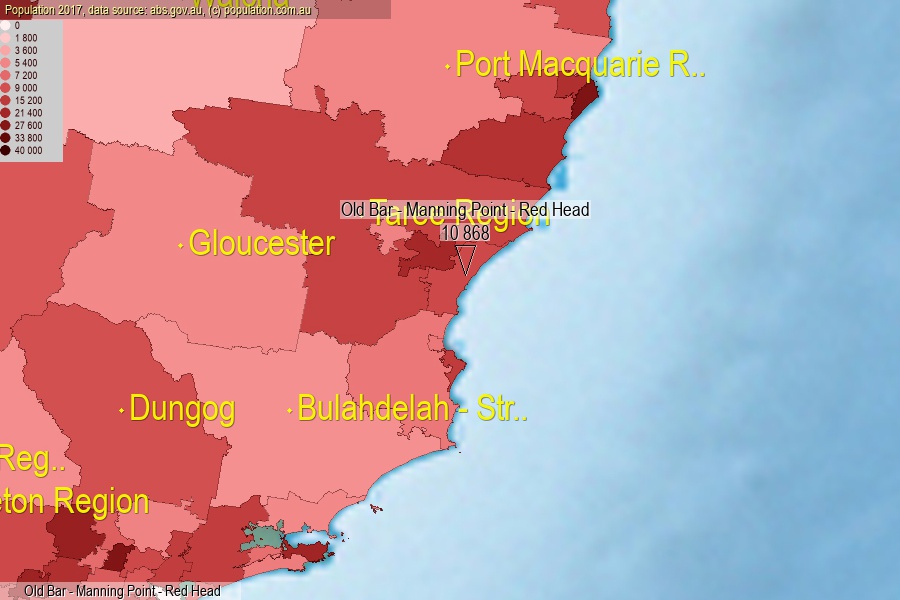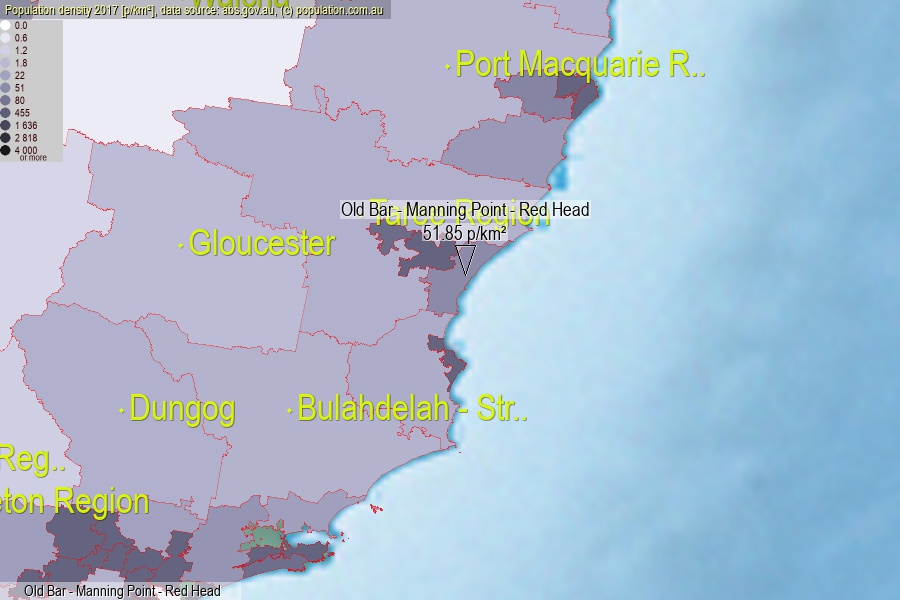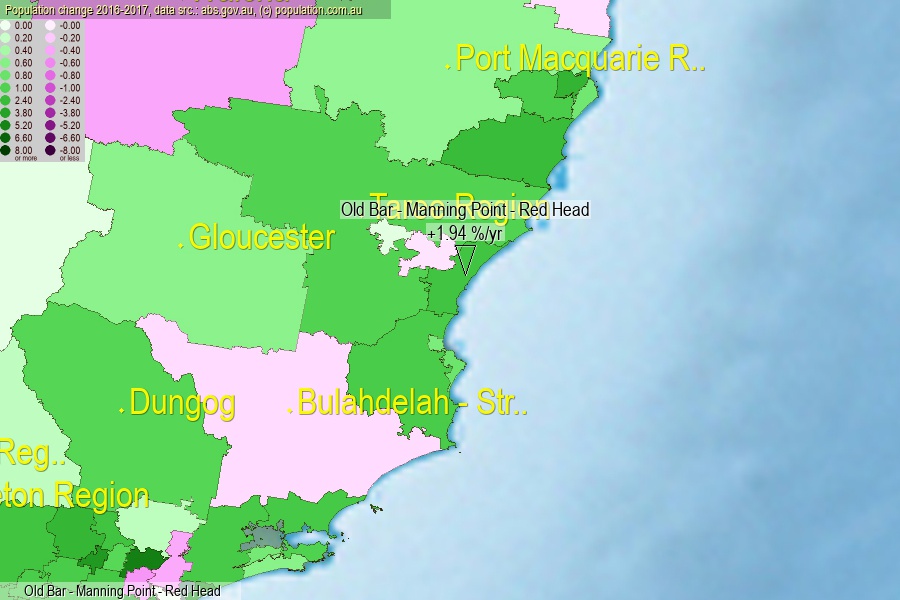 population.com.au
population.com.auLast official estimated population of Old Bar - Manning Point - Red Head (as Statistical Area Level 2) was 10 868 people (on 2017-06-30)[2]. This was 0.04% of total Australian population and 0.137% of NSW population. Area of Old Bar - Manning Point - Red Head is 209.60 km², in this year population density was 51.85 p/km² . If population growth rate would be same as in period 2016-2017 (+1.94%/yr), Old Bar - Manning Point - Red Head population in 2025 would be 12 675. [0]



Click to enlarge. Old Bar - Manning Point - Red Head is located in the center of the images.
Population [people], population density [p./km²] and population change [%/year] [2]
View borders » (new window) [4]
[1991-1992] +7.55 %/Yr.
[1992-1993] +6.05 %/Yr.
[1993-1994] +5.54 %/Yr.
[1994-1995] +5.36 %/Yr.
[1995-1996] +2.27 %/Yr.
[1996-1997] +1.01 %/Yr.
[1997-1998] +2.06 %/Yr.
[1998-1999] +3.20 %/Yr.
[1999-2000] +3.93 %/Yr.
[2000-2001] +2.15 %/Yr.
[2001-2002] +3.01 %/Yr.
[2002-2003] +5.56 %/Yr.
[2003-2004] +3.12 %/Yr.
[2004-2005] +2.90 %/Yr.
[2005-2006] +1.08 %/Yr.
[2006-2007] +3.55 %/Yr.
[2007-2008] +2.62 %/Yr.
[2008-2009] +1.13 %/Yr.
[2009-2010] +1.54 %/Yr.
[2010-2011] +0.70 %/Yr.
[2011-2012] +1.35 %/Yr.
[2012-2013] +1.49 %/Yr.
[2013-2014] +1.53 %/Yr.
[2014-2015] +1.73 %/Yr.
[2015-2016] +1.69 %/Yr.
[2016-2017] +1.94 %/Yr.
[0] Calculated with linear interpolation from officially estimated population
[1] Read more about SA2 and Australian Statistical Geography Standard (ASGS) on abs.gov.au
[2] Population data from Australian Bureau of Statistics (Population and density: 2017; change: 2016-2017)
[3] Digital Boundaries: Australian Statistical Geography Standard (ASGS) 2016.
[4] Border coordinates are simplifyed using Ramer-Douglas-Peucker algorithm.